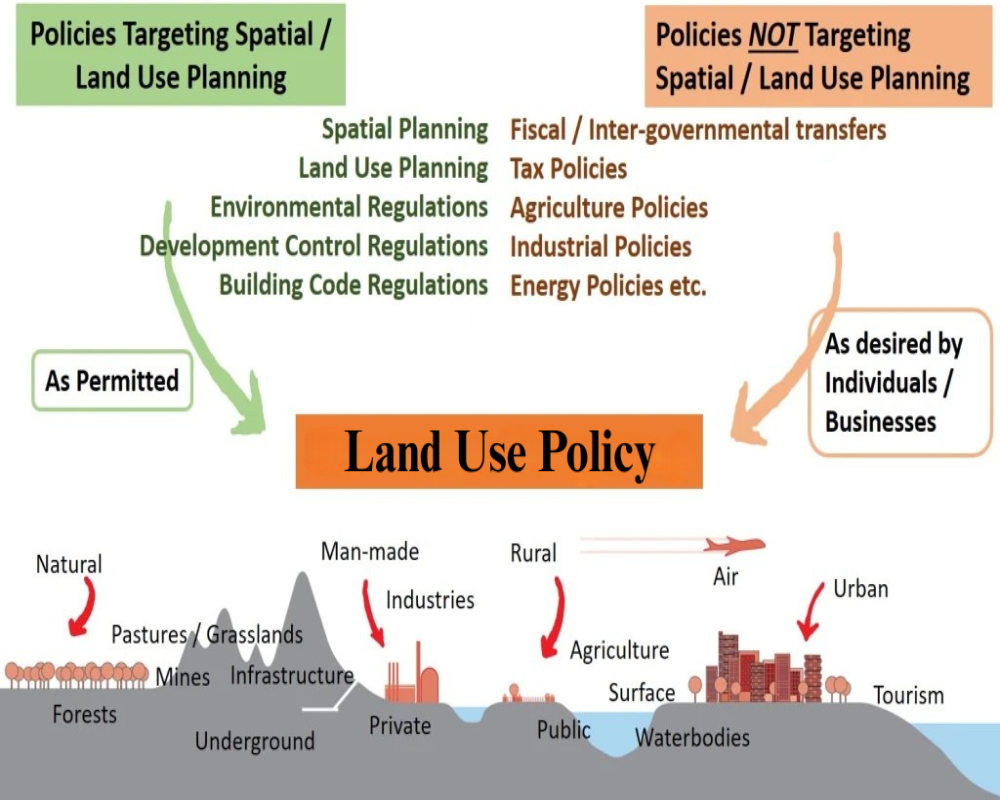Introduction
As industrialization continues to drive economic development and urban transformation, land use policy plays an increasingly critical role in shaping the spatial and strategic direction of industrial expansion. Land use policy is the set of guidelines, regulations, and frameworks that govern how land is allocated, developed, and conserved within a region. In the context of industrial growth, it provides a structured approach to ensure that manufacturing, logistics, warehousing, and related activities are appropriately located, sustainably managed, and integrated into broader regional planning goals.
Industrial expansion is not just about creating more space for factories or warehouses; it involves complex interactions between infrastructure, environment, community welfare, and economic strategy. A well-crafted land use policy ensures that industrial development happens in areas equipped with adequate transportation links, utility services, environmental safeguards, and workforce accessibility. Without such a framework, unregulated growth can lead to land use conflicts, environmental degradation, strained infrastructure, and reduced investor confidence.
Role of Land Use Policy in Industrial Development
Land use policy provides the foundation for identifying, designating, and regulating land for industrial use. It outlines which areas are suitable for different categories of industry—light, medium, or heavy—and what development standards must be followed. Through zoning classifications, master plans, and regional development strategies, land use policy ensures that industrial zones are planned with supporting infrastructure, environmental buffers, and long-term growth potential.
In emerging economies and rapidly urbanizing regions, industrial expansion is often a key driver of employment and foreign investment. Land use policy facilitates this by coordinating between public and private stakeholders to reserve land for future industrial use, guide infrastructure investment, and prevent encroachment by incompatible land uses. It also helps reduce risks associated with speculative land acquisition, unauthorized development, and infrastructure overload by setting clear rules for land conversion, plot sizes, access routes, and environmental compliance.
Integration with Economic and Environmental Objectives
Modern land use policy is not limited to physical planning; it is closely integrated with economic and environmental goals. As nations seek to position themselves in global manufacturing supply chains, attract high-value industries, and promote regional competitiveness, land use planning becomes a strategic economic tool. Industrial land is often designated within special economic zones, logistics hubs, or industrial corridors, supported by favorable policies on taxation, infrastructure, and ease of doing business.
At the same time, land use policy addresses the environmental impact of industrial activity by enforcing zoning setbacks, green buffer zones, pollution control norms, and land use compatibility studies. Sustainable industrial development is now a key objective, with land use policies encouraging eco-industrial parks, energy-efficient construction, and the integration of waste recycling and water conservation systems. These measures help ensure that industrial growth contributes positively to environmental resilience and long-term urban health.
Balancing Industrial Growth with Urban Planning
Land use policy plays a balancing role between promoting industrial growth and maintaining urban livability. Industrial zones must be sufficiently separated from residential and institutional areas to avoid conflict over noise, traffic, emissions, and safety concerns. Transitional zones and buffer areas are often used to create spatial and functional separation, while still ensuring efficient connectivity and supply chain integration.
Furthermore, land use policy ensures that industrial growth is not concentrated in overdeveloped regions but is distributed in a way that promotes regional equity and rural development. Policies may encourage industrial investment in underdeveloped districts through land grants, regulatory relaxations, or infrastructure subsidies, thus helping reduce regional disparities and create local employment.
Conclusion
Land use policy is a vital enabler of orderly, sustainable, and economically viable industrial expansion. It provides the regulatory structure and planning vision needed to guide where and how industries grow within a region. By addressing zoning, infrastructure, environmental protection, and community impact, land use policy ensures that industrial development aligns with long-term public interest and national growth goals. As industrial sectors evolve in response to technology, globalization, and climate change, land use policy must also adapt—remaining flexible, forward-thinking, and responsive to the diverse needs of both industry and society.
Hashtags
#LandUsePolicy #IndustrialExpansion #UrbanPlanning #SustainableDevelopment #ZoningLaws #EconomicGrowth #InfrastructureDevelopment #SmartGrowth #LandManagement #PolicyMaking #EnvironmentalImpact #CommunityDevelopment #IndustrialGrowth #LandUsePlanning #RegulatoryFramework #BusinessExpansion #UrbanDevelopment #PolicyAnalysis #LandUseRegulations #FutureOfIndustry


